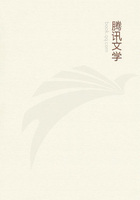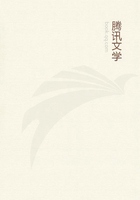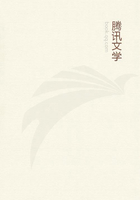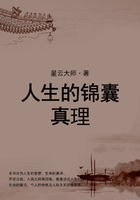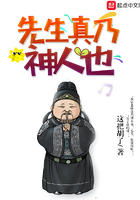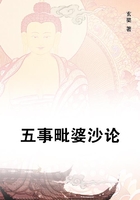Each one of the different Eocene and Oligocene horizons has its characteristic genus of horses, showing a slow, steady progress in a definite direction, all parts of the structure participating in the advance. It is not necessary to follow each of these successive steps of change, but it should be emphasised that the changes are gradual and uninterrupted. The genus Mesohippus, of the middle Oligocene, may be selected as a kind of half-way stage in the long progression. Comparing Mesohippus with Eohippus, we observe that the former is much larger, some species attaining the size of a sheep, and has a relatively longer neck, longer limbs and much more elongate feet, which are tridactyl, and the middle toe is so enlarged that it bears most of the weight, while the lateral digits are very much more slender. The fore-arm bones have begun to co-ossify and the ulna is greatly reduced, while the fibula, though still complete, is hardly more than a thread of bone. The skull has a longer face and a nearly enclosed orbit, and the brain-case is fuller and more capacious, the internal cast of which shows that the brain was richly convoluted. The teeth are still very short-crowned, but the upper incisors plainly show the beginning of the "mark"; the premolars have assumed the molar form, and the upper molars, though plainly derived from those of Eohippus, have made a long stride toward the horse pattern, in that the separate cusps have united to form a continuous outer wall and two transverse crests.
In the lower Miocene the interesting genus Desmatippus shows a further advance in the development of the teeth, which are beginning to assume the long-crowned shape, delaying the formation of roots; a thin layer of cement covers the crowns, and the transverse crests of the upper grinding teeth display an incipient degree of their modern complexity. This tooth-pattern is strictly intermediate between the recent type and the ancient type seen in Mesohippus and its predecessors. The upper Miocene genera, Protohippus and Hipparion are, to all intents and purposes, modern in character, but their smaller size, tridactyl feet and somewhat shorter-crowned teeth are reminiscences of their ancestry.
From time to time, when a land-connection between North America and Eurasia was established, some of the successive equine genera migrated to the Old World, but they do not seem to have gained a permanent footing there until the end of the Miocene or beginning of the Pliocene, eventually diversifying into the horses, asses, and zebras of Africa, Asia and Europe.
At about the same period, the family extended its range to South America and there gave rise to a number of species and genera, some of them extremely peculiar. For some unknown reason, all the horse tribe had become extinct in the western hemisphere before the European discovery, but not until after the native race of man had peopled the continents.
In addition to the main stem of equine descent, briefly considered in the foregoing paragraphs, several side-branches were given off at successive levels of the stem. Most of these branches were short-lived, but some of them flourished for a considerable period and ramified into many species.
Apparently related to the horses and derived from the same root-stock is the family of the Palaeotheres, confined to the Eocene and Oligocene of Europe, dying out without descendants. In the earlier attempts to work out the history of the horses, as in the famous essay of Kowalevsky ("Sur l'Anchitherium aurelianense Cuv. et sur l'histoire paleontologique des Chevaux", "Mem. de l'Acad. Imp. des Sc. de St Petersbourg", XX. no. 5, 1873.), the Palaeotheres were placed in the direct line, because the number of adequately known Eocene mammals was then so small, that Cuvier's types were forced into various incongruous positions, to serve as ancestors for unrelated series.
The American family of the Titanotheres may also be distantly related to the horses, but passed through an entirely different course of development.
From the lower Eocene to the lower sub-stage of the middle Oligocene the series is complete, beginning with small and rather lightly built animals.
Gradually the stature and massiveness increase, a transverse pair of nasal horns make their appearance and, as these increase in size, the canine tusks and incisors diminish correspondingly. Already in the oldest known genus the number of digits had been reduced to four in the fore-foot and three in the hind, but there the reduction stops, for the increasing body-weight made necessary the development of broad and heavy feet. The final members of the series comprise only large, almost elephantine animals, with immensely developed and very various nasal horns, huge and massive heads, and altogether a grotesque appearance. The growth of the brain did not at all keep pace with the increase of the head and body, and the ludicrously small brain may will have been one of the factors which determined the startlingly sudden disappearance and extinction of the group.
Less completely known, but of unusual interest, is the genealogy of the rhinoceros family, which probably, though not certainly, was likewise of American origin. The group in North America at least, comprised three divisions, or sub-families, of very different proportions, appearance and habits, representing three divergent lines from the same stem. Though the relationship between the three lines seems hardly open to question, yet the form ancestral to all of them has not yet been identified. This is because of our still very incomplete knowledge of several perissodactyl genera of the Eocene, any one of which may eventually prove to be the ancestor sought for.


